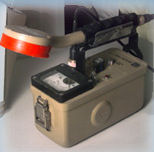Chapter 3
Initial Value Problems
 3.1 Differential Equations and Initial Values
3.1 Differential Equations and Initial Values
Exercises
- Differentiate each of the following functions.
- `ftext[(]t text[)]=t^3`
- `ftext[(]t text[)]=e^(3t)`
- `ftext[(]t text[)]=3-e^t`
- `ftext[(]t text[)]=1-e^(3t)`
- `ftext[(]t text[)]=t-e^(3t)`
- `ftext[(]t text[)]=t^3-e^t`
- `ftext[(]t text[)]=t^3-3^t`
- `ftext[(]t text[)]=t^3-3t^2+1`
- `ftext[(]t text[)]=e^(3t)-3t^2+3t`
- `ftext[(]t text[)]=3+7t-2t^2+3t^3`
-
Which of the following functions are solutions of the differential equation `dy text[/] dt=4y`?
- `ftext[(]t text[)]=e^(4t)`
- `ftext[(]t text[)]=e^(2t)`
- `ftext[(]t text[)]=2t^2`
- `ftext[(]t text[)]=5e^(4t)`
- `ftext[(]t text[)]=e^(4t)+5`
- `ftext[(]t text[)]=2t^2+3`
-
Which of the following functions are solutions of the differential equation `dy text[/] dt=4t`?
- `ftext[(]t text[)]=2t^2`
- `ftext[(]t text[)]=2t^2+3`
- `ftext[(]t text[)]=3t^2`
- `ftext[(]t text[)]=5e^(4t)`
- `ftext[(]t text[)]=e^(4t)`
- `ftext[(]t text[)]=2+2t^2`
-
Which of the following functions is the solution of the initial value problem `dy text[/] dt=4t` with `y=4` at `t=1`?
- `ftext[(]t text[)]=2t^2`
- `ftext[(]t text[)]=2t^2+1`
- `ftext[(]t text[)]=2t^2+4`
- `ftext[(]t text[)]=4e^(4t)`
- `ftext[(]t text[)]=3+2t^2`
- `ftext[(]t text[)]=2+2t^2`
-
Which of the following functions is the solution of the initial value problem `dy text[/] dt=4t` with `y=4` at `t=0`?
- `ftext[(]t text[)]=2t^2`
- `ftext[(]t text[)]=2t^2+1`
- `ftext[(]t text[)]=2t^2+4`
- `ftext[(]t text[)]=4e^(4t)`
- `ftext[(]t text[)]=3+2t^2`
- `ftext[(]t text[)]=2+2t^2`
-
Which of the following functions is the solution of the initial value problem `dy text[/] dt=4y` with `y=3` at `t=0`?
- `ftext[(]t text[)]=e^(4t)`
- `ftext[(]t text[)]=2e^(4t)`
- `ftext[(]t text[)]=3e^(4t)`
- `ftext[(]t text[)]=4e^(4t)`
- `ftext[(]t text[)]=3+2t^2`
- `ftext[(]t text[)]=3t^2`
-
Which of the following functions is the solution of the initial value problem `dy text[/] dt=4y` with `y=4` at `t=0`?
- `ftext[(]t text[)]=e^(4t)`
- `ftext[(]t text[)]=2e^(4t)`
- `ftext[(]t text[)]=3e^(4t)`
- `ftext[(]t text[)]=4e^(4t)`
- `ftext[(]t text[)]=3+2t^2`
- `ftext[(]t text[)]=3t^2`
- Find three solutions of each of the following differential equations.
- `(dy)/(dt)=7y`
- `(dy)/(dt)=7t`
- `(dy)/(dt)=1.07y`
- `(dy)/(dt)=1.07t`
- Find the solution of each of the following initial value problems.
- `(dy)/(dt)=7y` with `y=2` at `t=0`
- `(dy)/(dt)=7t` with `y=2` at `t=0`
- `(dy)/(dt)=1.07y` with `y=2.3` at `t=0`
- `(dy)/(dt)=1.07t` with `y=2.3` at `t=0`
-
 Table E1 shows the number of disintegrations per minute counted by a Geiger counter that is testing a sample of radioactive barium-137. The disintegration rate of a radioactive substance is proportional to the amount of the substance not yet disintegrated.
Table E1 shows the number of disintegrations per minute counted by a Geiger counter that is testing a sample of radioactive barium-137. The disintegration rate of a radioactive substance is proportional to the amount of the substance not yet disintegrated.
- Find a formula for a function that approximately fits the data.
- Find the half-life of barium-137, that is, the time it takes for a given sample to decay to half the original amount.
Table E1 Disintegrations per minute
for radioactive barium-137Time (minutes)Counts per minute010,034181052583234553433395264862035
This problem is adapted from the Core-Plus Mathematics Project.

